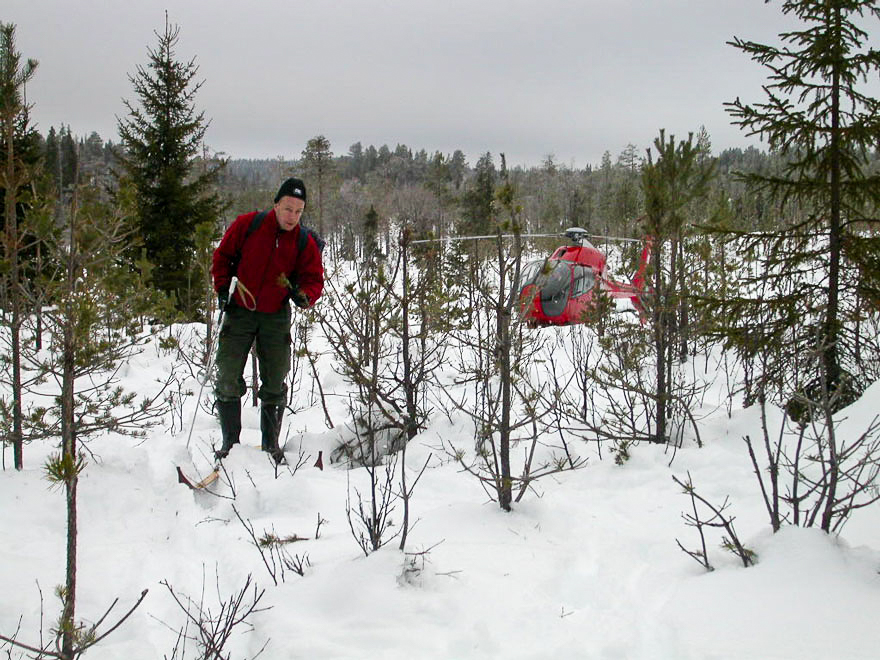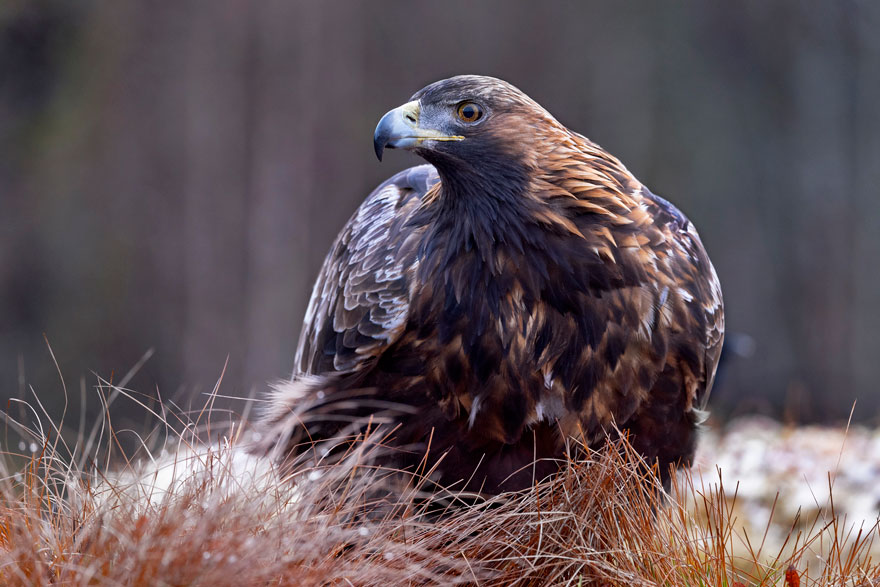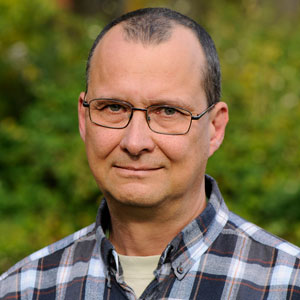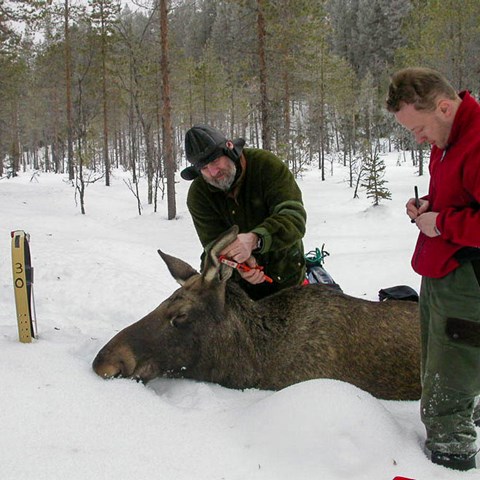It is the evening of 1 March 2003. Three researchers at the former Department of Forest Animal Ecology (now Department of Wildlife, Fish, and Environmental Studies) are sitting in a hotel room in Åsele in northern Sweden, staring in fascination at a laptop with four dots moving on a map. It's a bit "James Bond", they think.
What the researchers see are the real-time movements of the four moose they equipped that day with brand new GPS collars. The collars send regular updates of the moose's position via a mobile phone modem to a new database at SLU that shows the position on a map. The future is here.
Before 2003, researchers manually tracked the moose they studied using radio-transmitters or they waited a year to collect the collars and empty them of the stored GPS positions, sometimes only to discover that these early collars had malfunctioned at some point and were not storing new positions.
 Göran Ericsson skis through the terrain to get to the moose. Åsele 2003. Photo: Holger Dettki
Göran Ericsson skis through the terrain to get to the moose. Åsele 2003. Photo: Holger Dettki
The researchers sit for a long time in front of the computer that evening in Åsele, dreaming of all the new research questions that suddenly can be answered when it is possible to follow the moose's movements in real time. This was exactly twenty years ago today.
When the system is made public a week later, interest explodes. Members of the public who previously didn't care about computers or the internet are suddenly on the edge of their seats in front of a screen. The launch generates big headlines.
“Even a major American weekly gets in touch to ask how our moose manage to send text messages; what do the mobile phone keys look like? We had some explaining to do...," says Holger Dettki, coordinator of the system, named Wireless Remote Animal Monitoring, WRAM.
 How are golden eagles affected by wind power? This is a research question that has been studied using this tracking technique. Photo: Jörgen Wiklund, SLU
How are golden eagles affected by wind power? This is a research question that has been studied using this tracking technique. Photo: Jörgen Wiklund, SLU
The system kept going, and more and more researchers at SLU and beyond became aware of the system. Today, in addition to moose, wolves, reindeer, golden eagles, bears, and lions are tracked. The system continues to develop with new technology to handle physiological data from animals such as heart rate and body temperature, known as biotelemetry.
“Today, we are one of the largest e-infrastructures in Europe for receiving, managing, analysing, storing, and visualising sensor data from wild animals," says Holger Dettki.
The data has been used in many different contexts - from how moose body size and migration behaviour are affected by climate change, how golden eagles are affected by wind power developments, how bears' heart rates vary during hibernation, how indigenous people in Tanzania can coexist with lions, to legal processes around the indigenous Sami's grazing their reindeer in the Swedish coastal country. In Swedish Television's successful programme "The Great Moose Migration" (Den stora älgvandringen) viewers have been able to follow a number of selected moose in real time.
This success story should be celebrated with a big birthday party, says Holger Dettki. At the same time, he raises concerns about the funding clouds that lurk in the sky.
“I think back to that evening in Åsele: we have achieved a lot together, a lot has turned out as we hoped in terms of new research, new networks, new opportunities for SLU. Technology has made gigantic leaps - when we started there were no smartphones - and the amount of data has exploded. However, how will we manage this responsibility for future generations of scientists and environmental analysts? Are we just looking short-term at how we can save a buck and shifting the responsibility to 'others'?" asks Holger Dettki.
 Holger Dettki.
Holger Dettki.
Photo: Johan Samuelsson.

 Göran Ericsson skis through the terrain to get to the moose. Åsele 2003. Photo: Holger Dettki
Göran Ericsson skis through the terrain to get to the moose. Åsele 2003. Photo: Holger Dettki How are golden eagles affected by wind power? This is a research question that has been studied using this tracking technique. Photo: Jörgen Wiklund, SLU
How are golden eagles affected by wind power? This is a research question that has been studied using this tracking technique. Photo: Jörgen Wiklund, SLU Holger Dettki.
Holger Dettki.